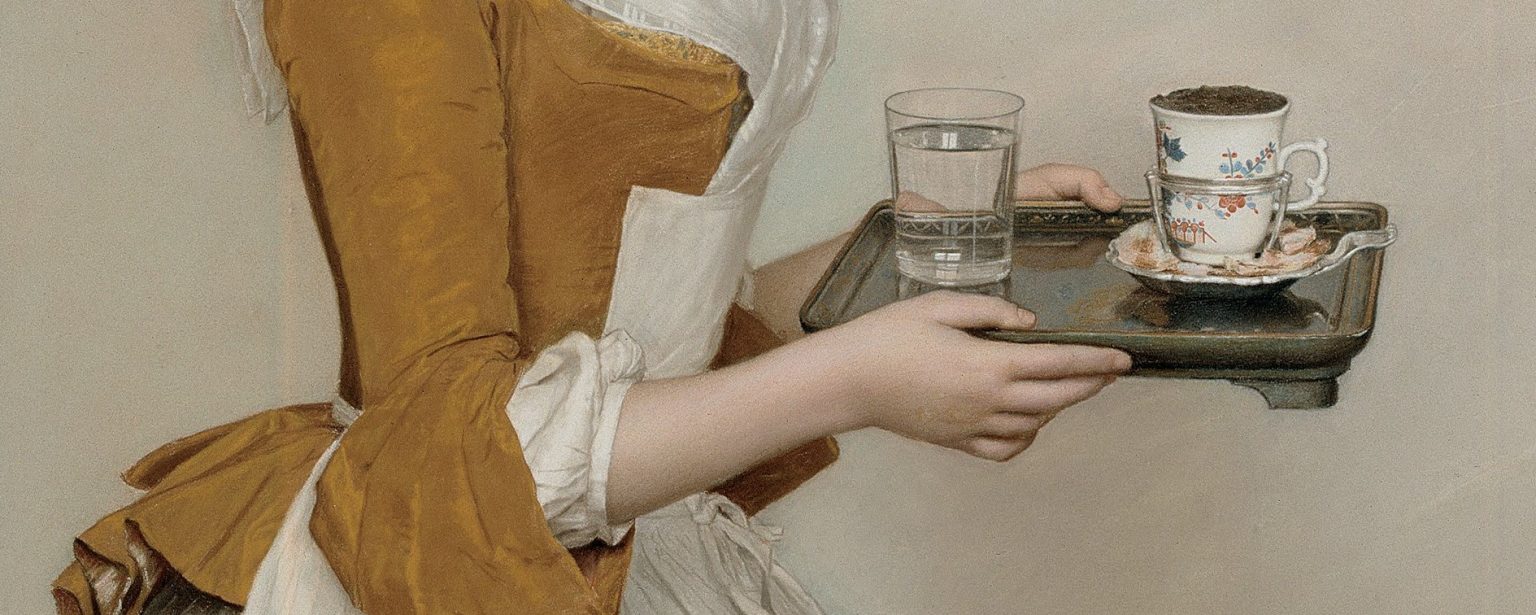What do we do when the first act of an opera ends, the curtain falls, and the entr’acte begins? We rush off to the buffet, of course. Relaxation with a glass of good sparkling wine – that’s what entr’actes are for. Listening to arias is not easy work…
“Weaklings!”, Italians of the 18th century would sniff scornfully if they could see us. They spent the intermission between the two acts of the main piece enjoying one more performance.
Two Poles of Dramatic Art
In the 1730s, opera seria (literally, “serious opera”) reigned supreme on the stage.
The plots of such musical dramas were based on myths or heroic stories. Their protagonists – generous rulers, high-minded lovers – fought valiantly for the truth and always gained a victory over vile schemers.
The action took place against rich stage sets, elaborate ballet often enlivened the event, however, the most impressive element of opera seria was the masterful singing.
The arias had “a distinct structure, called de capo (“from the top”), with three sections, the third being a repeat of the first, with ornamentation to show off the singer’s ability. (…) The second section introduced a new melody or developed the initial tune”. (1) Each aria stopped the action for a long time and required significant concentration, not only from the singers but also from the audience.
One of the earliest intermezzos of this sort became La Serva Padrona (“The Maid Turned Mistress”) by young composer Giovanni Battista Pergolesi. Pergolesi composed it as the supplement to his own opera seria, Il prigionier superbo. Both musical plays premiered on 5 September, 1733 in Naples.
In order to keep high art’s purity and not let the public get bored at the same time, organizers of performances started to dilute each “true” opera with a short comedy intermezzo. Its formula was elementary: a farcical plot plus nice tunes. The characters of the entertaining operas were stock ones – a wealthy pushover, a perky trickster, a hopeless lover, and the like.
Il prigionier superbo turned out to be unsuccessful and soon sank into oblivion; La Serva Padrona was destined to live forever. It gave rise to an independent and very viable genre – opera buffa.
Ageless Hit By Pergolesi
Look for either the recording of a very classical La Serva with Donato Di Stefano and Patrizia Biccirè (EuroArtsChannel on YouTube) or a slightly more modern performance with Furio Zanasi and Sonya Yoncheva (HD Suisse).
The opera is about 45 minutes long. If you don’t have time to watch it right now, that isn’t a problem – I’ll tell you the plot.
We see a dressing room. An old man is sitting at the table. He is awfully frustrated.
Imagine you stop in a cafe to have a morning hot drink and then get down to usual matters with vigor. You order, for example, a cup of coffee. Time flies. You have already been waiting for three hours, yet the waiter hasn’t brought your drink. How would you feel?
The character of La Serva Padrona, Uberto, feels the same – his maidservant Serpina hasn’t brought him his hot chocolate. Here is the scene of his suffering (I found it in the performance of Mauro Borgioni):
The chocolate is small stuff. Uberto’s maidservant, Serpina, ignores practically all his requests. Moreover, she herself attempts to command her master. “Hush! You must learn to accept my decision!”, she says in response to any objections. Uberto cannot even leave the house without her permission.
The master resolved to get rid of the cheeky maid and tells his valet, Vespone, to find him a wife. Serpina suddenly approves of his plan – provided he marries… her.
“No, no, no!”, Umberto replies, “Your ambitions are too lofty!” Serpina pretends to be upset. A bit later, the girl informs the master that she, poor thing, won’t stand in the way of Unerto’s happiness. She has found a fiancé. The fiancé’s name is Tempesta (“Storm”). And, oh, his name suits his temper! He is capricious and irascible.
Serpina offers the master a chance to get acquainted with her future husband. Uberto agrees. A mustached soldier enters the room. Without saying a word, just stomping or gripping his small sword, the soldier demands 4,000 crowns for a dowry. Serpina voices his thoughts. If he does not receive the money, he will insist that Uberto marry Serpina in his place.
Being tight-fisted and cowardly, Uberto accepts the proposed conditions. After that, a soldier tears his bushy mustache off. It turns out that Serpina has convinced the valet, Vespone, to join her in tricking the master into marrying her.
Uberto is happy with the outcome though. The old bachelor realizes he loves Serpina.
We don’t blame the wily maid either. She wants to be the mistress of the household, but a new social status is not her only goal. It seems to me that Serpina does love Uberto – as much as he loved her. The irresolute man and the enterprising girl need each other.
Unlike serious musical dramas of the 18th century, La Serva Padrona is still regularly performed in European opera theaters. A few good movies were made out of it; its most recent movie adaptation was released in 2011.
From Artificiality to Art
Why does the tale of how a cunning maidservant became her master’s wife remain popular? Why is this unassuming short opera considered to be a classical masterpiece?
Perhaps there’s a deep hidden meaning in its words or nice tunes? No, not at all. La Serva Padrona is as simple and funny as it seems.
I would compare Pergolesi’s piece with the lovely Italian comedies in which Adriano Celentano plays. Their task is not to educate the viewers, but to give them the joy of life.
You may have noticed I said “Pergolesi’s piece” and didn’t mention the librettist. The libretto of La Serva, written by Gennaro Federico, isn’t genial: he used schematic characters from commedia dell’arte, the preceding form of professional theatre, and constructed a predictable plot. The wonder happened thanks to the composer’s talent. Giovanni Battista Pergolesi managed to find such fresh and expressive musical language for these stock characters that they started to behave like real people. Artificiality transformed into art.
Free from the chains of strict traditions, the first successful opera buffa prepared the fertile ground for dramatic innovations. Today we can call it the mother of the operas by Rossini and Donizetti, the grandmother of Mozart’s The Marriage of Figaro, and the grand grandmother of modern musical theatre.
- The Classical Music Book: Big Ideas Simply Explained – DK, Penguin Random House, 2018
- Definitive Opera Encyclopedia: New & Expanded Edition – Flame Tree Publishing, 2017

